Table of Contents
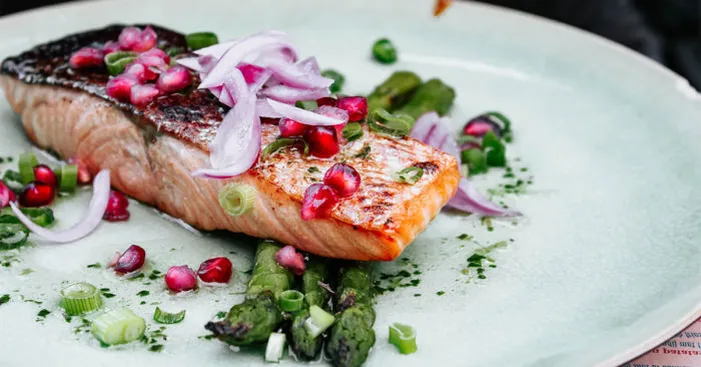
When a piece of a salmon fillet is properly cooked, it turns from its orange color to a pale pink and becomes opaque at the center.
People have different personal tastes when it comes to meat in general and fish aren’t an exception.
This is the same reason why some people like their salmon fully cooked and others like it under-cooked.
For someone who likes undercooked salmon, tasting a fully cooked salmon fillet would feel like it’s over-cooked if not burnt!
Undercooked salmon generally refers to unfinished cooking.
Let’s say Salmon needs 8 minutes to be cooked and if cooked less than 8 minutes they are undercooked.
In other words, undercooked salmon means that the meat still has a pink mostly transparent color to the center and hasn’t turned fully opaque yet.
They also tend to have a more juicy taste and are super moist compared to the dryness of a fully cooked salmon.
Some very famous dishes, especially Sushi and Sashimi, use rare salmon because of the tastiness of this fish even when it’s totally rare. (1)
Cooking salmon transforms it from its completely rare state to a gradually cooked one, depending on the time of cooking.
This means there is a specific time when the whole salmon is fully cooked and any cooking less than that is considered “undercooking” including the rare salmon since it is edible in some dishes.
If you want to try exotic dishes with undercooked salmon including rare, you may be wondering if it’s safe to eat raw salmon!
We are going to review the health issues linked to eating undercooked salmon and show you how to enjoy this fish safely.
Precautions of undercooked salmon:

When making undercooked salmon, the temperature and the cooking time are not sufficient to cook the whole fish properly.
There are still raw appearances especially in the middle and this means that some bacteria are still very much alive.
Some of these bacteria exist in the same natural environment as salmon.
However, other bacteria could be due to the improper handling of the fish during fishing, transportation, and storing. (2)
When the inside of the salmon reaches 63°C (145°F), the fish is fully cooked and all the parasites and bacteria are dead. (3)
Since undercooked salmon still has certain rareness it means the insides of the fish didn’t reach that temperature which explains the existence of live bacteria.
So yes my friend, there is a risk of infection!
Parasites in undercooked Salmon:

Salmon is among the list of the known sources of parasites, which are small organisms living on or in other beings including humans.
Parasitic worms are roundworms or tapeworms and they are common in fish including salmon.
The SCD (Japanese Sickle Cell Disease) is caused by a parasitic worm that can live in the intestine and grows up to 40ft (12 meters). (4)
Such types of worms have been found in wild salmon from Japan to Alaska.
They have also been found in the intestines of people who consumed raw salmon from these regions.
These are some of the health issues that can be caused by parasites in raw salmon:
- Weight loss
- Abdominal pain
- Diarrhea
- Anemia
However, the majority of people who eat raw salmon usually have no symptoms at all.
Bacterial infection caused by undercooked salmon:
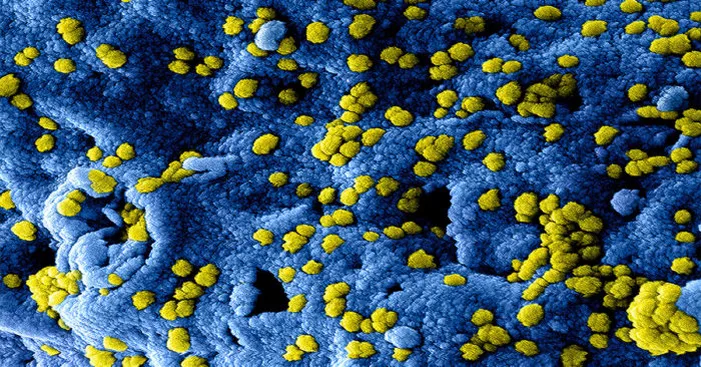
This applies to all types of seafood as they can carry bacteria or viral contaminations.
Salmon is not an exception, they can host bacteria which can cause serious illness especially when the fish is undercooked.
Some of these bacteria that can be in undercooked salmon are:
- Shigella. (5)
- Salmonella. (6)
- Vibrio. (7)
- Listeria monocytogenes. (8)
- Clostridium botulinum. (9)
- Escherichia Coli. (10)
- Hepatitis A. (11)
These bacterias can be present in undercooked salmon due to poor storage conditions or catching fish in contaminated waters.
Salmon can live in much-polluted waters and they may contain traces of persistent organic pollutants.
You should know that persistent organic pollutants are toxic chemicals that include human and industrial wastes.
These are some of the illnesses linked to persistent organic pollutants: (12)
- Immune disorder
- Increased risk of cancer
- Reproductive problems
Researchers took samples of 10 different types of fish from a Spanish market and found that salmon contains the highest amount of flame retardants.
However, the levels were still within the security measures and shouldn’t cause any dangers to human consumption.
How can you reduce the risk of contamination from undercooked salmon?

This part is for the lovers of juiciness and moist fish, yes you can still enjoy undercooked salmon under certain health measures!
Think about this… In the old ages before discovering fire and out of their instinct of hunger, humans used to fish, and they ate the fish raw.
If any contamination harmed them, many coastal tribes wouldn’t be able to survive until today right?!
If you like your fish undercooked, make sure to pre-freeze it at-35°C (-31°F) as that will eliminate parasites from the salmon. (13)
However, most home freezers don’t offer that proper degree that kills parasites.
To ensure your salmon is free from parasites, there are certain things you should look for when you buy frozen salmon or order a salmon dish.
Properly frozen salmon should look moist and firm with no bruising, odor, or change of color.
In case you are preparing raw salmon in the kitchen, make sure the kitchen surfaces in use, the knives, dishes, and anything that comes in contact with the raw salmon is clean.
Also, keep the salmon in the fridge and only take them out at the last minute to avoid bacterial contamination.
How to buy good Salmon free of contamination?
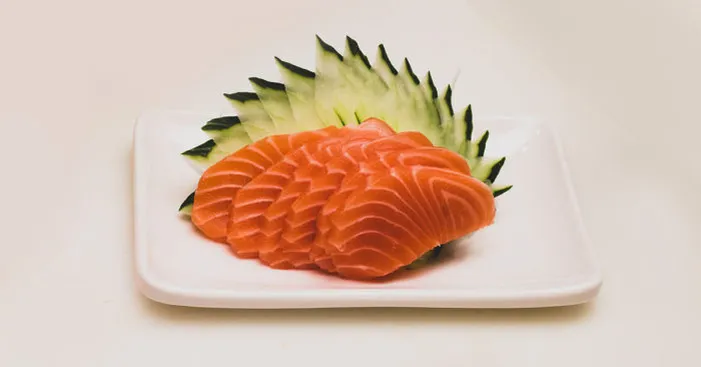
Experts recommend paying attention to the parts of the salmon with the most fillets, since it should be much softer than the tail. (14)
If the fish is fresh, it should be pink with an orange shade.
Not only the color but also the smell of the salmon should be minimal or totally absent, and it should not be slippery.
Benefits of properly handled undercooked salmon:
Salmon is one of the most nutritious fish because it contains a large amount of Omega-3 fatty acids.
Also, it contains many types of vitamins including vitamins C, A, B6, and B12.
In addition, salmon offers a lot of minerals including Calcium, Magnesium, Potassium, Zinc, Phosphorus, and mostly Selenium.
Alongside its richness in protein and antioxidants, salmon offers a lot of health virtues.
These are the nutritional data that counts for 3 ounces (85grams) of undercooked salmon: (15)
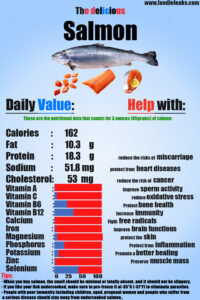
- Calories: 162
- Protein: 19.84g
- Fat: 6.34g
- Vitamin A: 1%
- Vitamin C: 5%
- Vitamin B6: 27%
- Vitamin B12: 40%
- Calcium: 1%
- Iron: 2%
- Magnesium: 6%
- Phosphorus: 21%
- Potassium:9%
- Zinc: 2%
- Selenium: 51%
These are some of the most abundant nutrients found in Salmon and their health benefits.
Selenium:
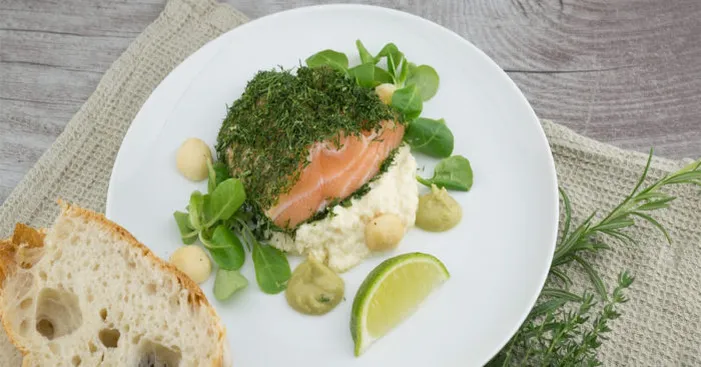
This fish contains a good amount of Selenium, a mineral that exists in the soil and transfers to our bodies through the food we eat.
Selenium is a natural mineral that has extremely beneficial antioxidant properties.
In particular, this mineral is abundant in Salmon and just 108g of this fish provides your body with 65% of its Selenium daily need.
Here are some of the health benefits that Selenium offers: (16)
- Reduces the risks of miscarriage.
- Protects the body against the development of cardiovascular diseases.
- Helps reduce the risk of cancer.
- Improves sperm activity.
- Reduces oxidative stress.
- Protects bone health.
- Increases immunity especially for people who suffer from thyroid disease.
Even though our bodies need just a small amount of Selenium, we must consume enough of it in our daily meals.
A Selenium deficiency can decrease our cognitive ability and no one wants that!
Omega 3 fatty acids:
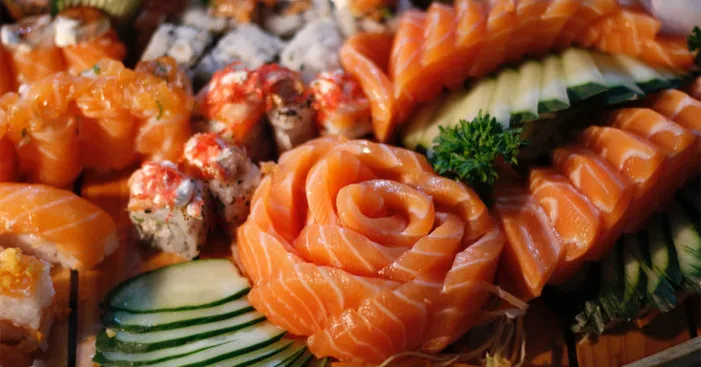
Salmon is one of the best sources of omega-3, it provides two very beneficial types: Docosahexaenoic acid (DHA) and Eicosapentaenoic acid (EPA). (17)
These types of omega-3 fatty acids are very necessary for the body and it can’t produce them.
Therefore, we have to consume food that offers such nutrients in sufficient quantities.
Here are some of the health benefits of Salmon thanks to these two omega-3 fatty acids : (18)
- Fight free radicals.
- Prevent heart diseases by lowering blood pressure and reducing blood clotting.
- Maintain healthy bones and reduce the risks of osteoporosis and rheumatoid arthritis.
- Improve various brain functions including memory and help prevent Alzheimer’s.
Astaxanthin:
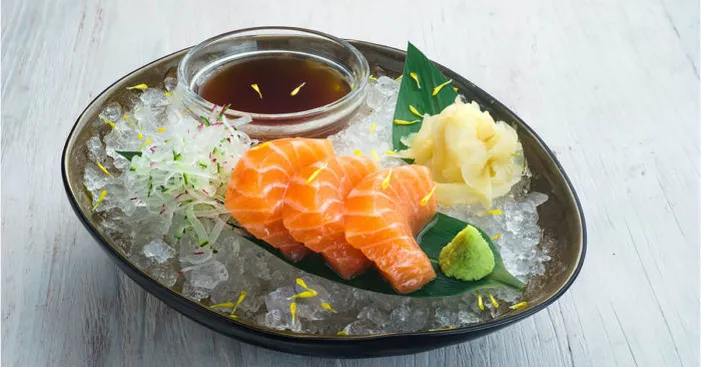
The pinkish-orange color of Salmon meat is because it contains a good amount of Astaxanthin. (19)
It is the same carotenoid coloring pigment responsible for the orange color of shrimp and crab.
In addition to giving Salmon its orange color, Astaxanthin is also responsible for many of the health benefits that come with this fish.
With the help of omega-3 acids, Astaxanthin offers the following virtues: (20)
- Help protect the skin and prevent it from becoming wrinkly.
- Help reduce heart diseases by promoting the oxidation of the good cholesterol in favor of the bad type.
- Protect the brain and the nervous system from inflammation.
Just like Omega-3 acids, our bodies cannot produce Astaxanthin and we have to get it in the food we eat.
Protein:
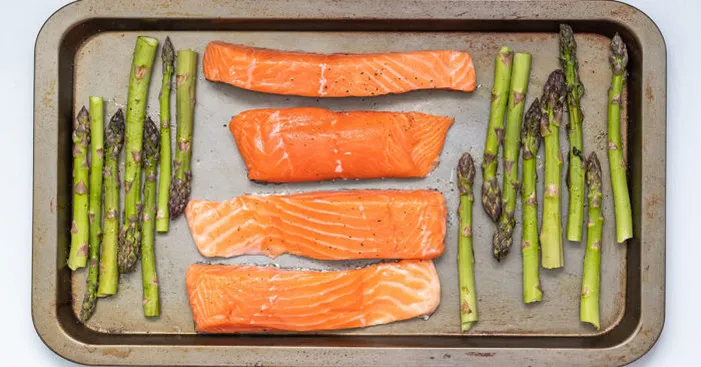
As you may already know, seafood often offers a good amount of protein.
Salmon isn’t any different!
It contains a large amount of high-quality protein, which is essential for many body functions.
Proteins play an important role in our bodies, as they are essential for most cellular functions.
They are also responsible for building the body during growth and even after it by maintaining the good functioning of body tissues.
Our diets must include several essential elements and proteins are among the first ones on the list.
Here are the health benefits of Salmon thanks to the proteins it offers: (21)
- Promote better healing from injuries.
- Maintain bone health and protect against osteoporosis.
- Preserve muscle mass during weight loss and while aging.
Each meal must contain high-quality proteins.
More generally, experts recommend consuming protein from natural sources instead of protein supplements.
Those natural sources include chicken and fish such as Salmon.
People who shouldn’t eat undercooked salmon:
The immunity differs from one person to another which is why some people are more vulnerable to illnesses than others.
That is why some people are more likely to get a serious foodborne infection.
These people should stay away from undercooked salmon: (22)
- Children
- Pregnant women
- Old people
- People with a weak immune system, such as people with liver disease, cancer, HIV, diabetes…
Precautions could save these people’s lives since a simple foodborne illness caused by undercooked salmon can lead to serious health issues.
References:
(1): How to Choose Sushi-Grade Seafood – Kobe Jones
(2): Parasites | SEAFOOD HEALTH FACTS
(3): Important temperatures in Cooking and Baking (scienceofcooking.com)
(4): https://pubmed.ncbi.nlm.nih.gov/22259924/
(5): https://www.cdc.gov/shigella/index.html
(6): https://www.cdc.gov/salmonella/index.html
(7): https://www.cdc.gov/vibrio/index.html
(8): https://www.cdc.gov/listeria/index.html
(9): https://www.fda.gov/food/laboratory-methods-food/bam-chapter-17-clostridium-botulinum#:~:text=Clostridium%20botulinum%20is%20an%20anaerobic,toxin%2Dcontaining%20foods%20are%20ingested.
(10): https://www.cdc.gov/ecoli/index.html
(11): https://www.who.int/news-room/fact-sheets/detail/hepatitis-a
(12): 410-06-04Disease.indd (captainjacksalaska.com)
(13): AskUSDA
(14): How to Buy Wild-Caught or Farmed Salmon at the Grocery Store | Epicurious
(15): FoodData Central (usda.gov)
(16): Selenium Benefits: Here Are 7 That Are Proven by Science – Health Guide
(17): https://pubmed.ncbi.nlm.nih.gov/10479465/
(18): Omega-3 Fatty Acids: Foods & Benefits (clevelandclinic.org)
(19): Salmon Color Guide: Why Salmon are Pink or Red | Wild Alaskan Company
(20): Astaxanthin: 19 Known Medical Benefits, Uses, Side Effects & Conditions – Healthcare Weekly
(21): Why Is Protein Important In Your Diet? | Piedmont Healthcare
(22): Is Raw Seafood Safe To Eat (eatright.org)
